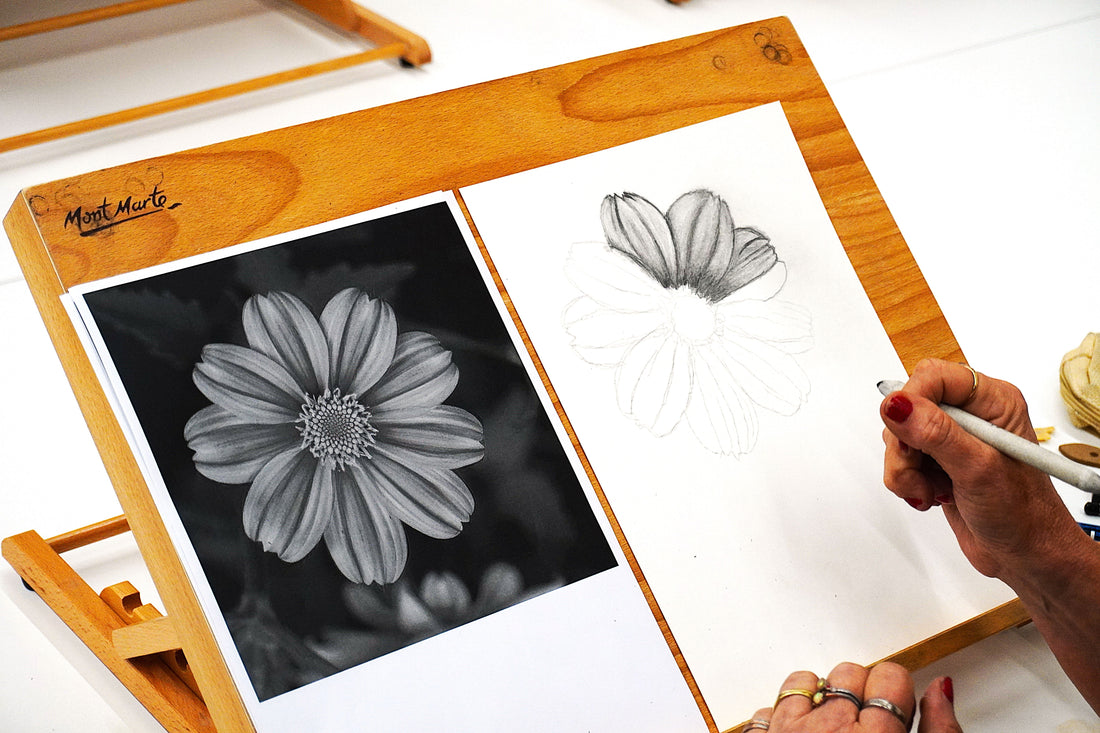
Overcoming perfectionism in your art: Growth mindset vs perfectionism!
Share
Perfectionism vs. Growth in Drawing: How to Break Free and Improve
Perfectionism is something that haunts many artists, especially those striving to master realism. While it may seem like a strong motivator, perfectionism can actually hinder progress, leading to frustration, burnout, and even creative paralysis. Understanding the difference between perfectionism and a healthy drive to improve is crucial for any artist looking to grow.
When I first started with realism drawing I would look at everyone else's work and think to myself "there is no way that I will ever be able to achieve that level of realism!" I would plug along constantly stuck in comparison of others work and would be using all of my energy trying to get things "right". This is at the core of perfectionism. To compare yourself to an realistic goal will have you constantly chasing you tail trying to beat the best! The change for me happened one day while I was drawing a bigger piece of mine and someone came to me and said "wow! I will never be able to achieve a level of realism like that!" suddenly I was on the other side of the coin, someone who was chasing an unobtainable goal, was now the person who was being compared. You see, realism attracts these types of characters, you are here at a deep fundamental level, because you want to create something amazing! You want people to look at your work and marvel at the achievement that is realism and this is a great thing. However if you really want to change how you view your work, you are not going to find the answer in the next skill or technique that will take your drawing to the next level, you are going to find it within, in your mindsets, in how you view yourself in the reflection of your art. In the end, the only way to truly diverge from perfectionism is to create a growth mindset. You can't change who you are or the tendencies you have, you can't dull that obsessive drive to improve, but what you can do is funnel that into a force for good. If you can look at every single piece of artwork as a learning curve, not a finished piece, every pencil stroke as a journey toward a better you, every new skill as a new piece to the puzzle, I guarantee you, you will never look at your artwork the same! In this article we are going to break down the difference between perfectionism and growth and how you can become the next best version of yourself!
Perfectionism vs. The Drive to Improve
At first glance, perfectionism and a drive to improve may appear similar, but they stem from very different mindsets:
- Perfectionism is rooted in fear—fear of making mistakes, fear of not being good enough, and fear of judgment. It often leads to over-focusing on flaws, getting stuck on tiny details, and feeling like your work is never “finished” or “good enough.”
- The Drive to Improve, or growth mindset, on the other hand, is fueled by curiosity and passion. It allows you to recognise areas for growth without becoming discouraged. You appreciate progress, embrace challenges, and understand that mistakes are part of the learning process.
How Perfectionism Holds You Back
Perfectionism can manifest in several ways, including:
- Spending excessive time on one section of a drawing, never feeling satisfied
- Avoiding difficult subjects for fear of failure
- Constantly comparing your work to others and feeling inadequate
- Feeling overwhelmed and procrastinating rather than creating
Here are five ways a growth mindset helps build up your artwork:
- Embraces mistakes as learning opportunities – Instead of fearing errors, a growth mindset allows you to see mistakes as stepping stones to improvement. Each drawing teaches you something new.
- Encourages experimentation – Trying new techniques, materials, or styles becomes exciting rather than intimidating, helping you develop versatility and confidence in your art.
- Fosters resilience – Challenges and setbacks won’t discourage you; instead, they’ll motivate you to keep practicing and refining your skills.
- Shifts focus to progress over perfection – You begin appreciating small improvements in your work rather than obsessing over getting everything exactly right.
- Builds long-term passion – By seeing art as an ongoing journey rather than a destination, you maintain enthusiasm and enjoy the creative process more fully.
Breaking free from perfectionism doesn’t mean lowering your standards—it means shifting your mindset to allow for steady, healthy growth.
Three Ways to Overcome Perfectionism in Drawing
1. Celebrate Small Wins
Instead of fixating on what’s wrong with a drawing, focus on what’s going well. Did you capture a great texture? Nail the proportions of a difficult subject? These are wins worth acknowledging. Keep a sketchbook of “small victories” where you celebrate progress instead of perfection. Over time, you’ll see tangible growth and learn to appreciate your own artistic journey.
2. Work in Small Sections & Let Go.
One powerful technique is to block out small sections of your drawing and work on them with full focus. Once you’ve done your best, move on to another area without obsessing over perfection. This prevents overworking and allows the piece to develop organically. The more you practice letting go, the easier it becomes to trust the process rather than striving for flawlessness.
3. Shift Your Perspective on Mistakes
Mistakes aren’t failures—they’re stepping stones. Every great artist has made thousands of them. Instead of viewing mistakes as problems, see them as lessons. Ask yourself: "What can I learn from this?" The more comfortable you get with making and learning from mistakes, the faster you’ll improve.
Progress Over Perfection
The most accomplished artists in the world didn’t get there by being perfect; they got there by continuously improving. The key to mastery isn’t perfection—it’s persistence, patience, and passion. So next time you catch yourself getting caught up in perfectionism, remind yourself: art isn’t about being flawless, it’s about expressing, learning, and growing.
Let go of perfection, and watch your art—and your enjoyment of it—flourish.
